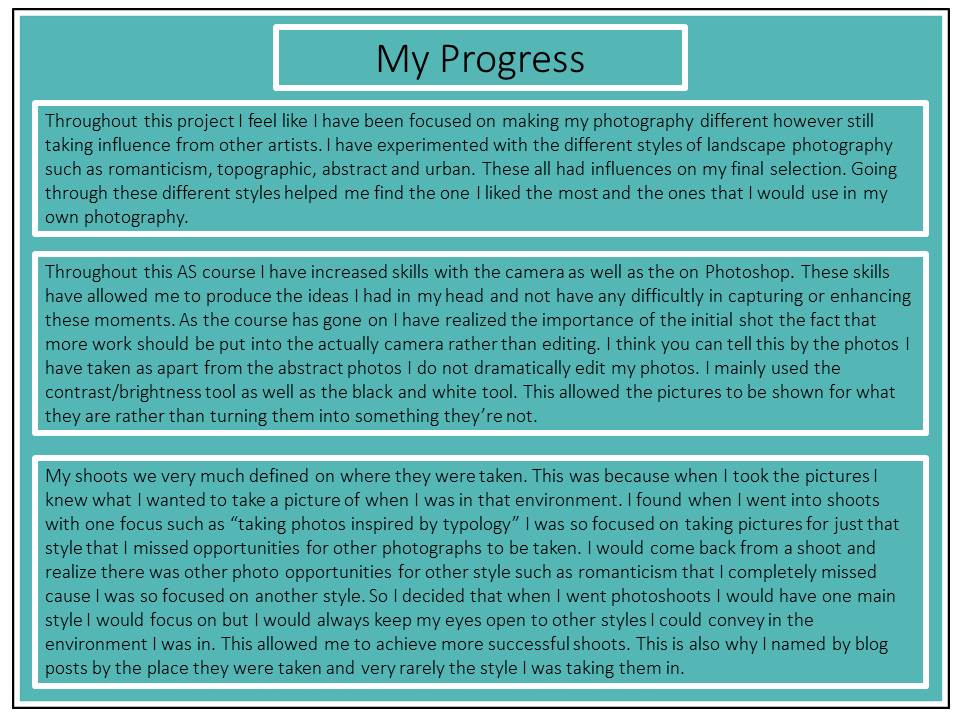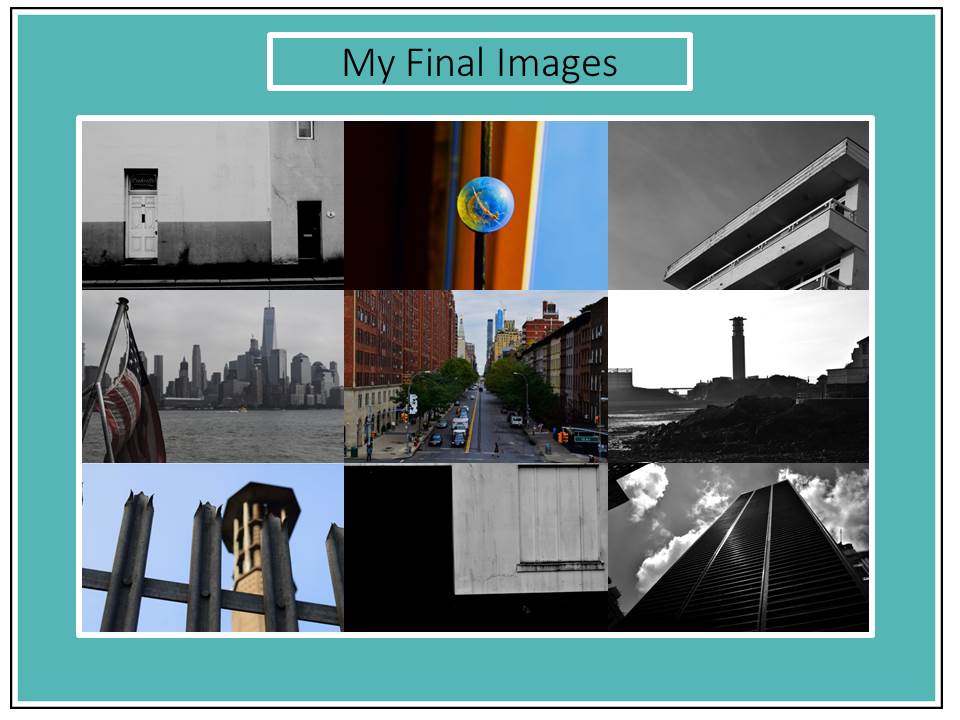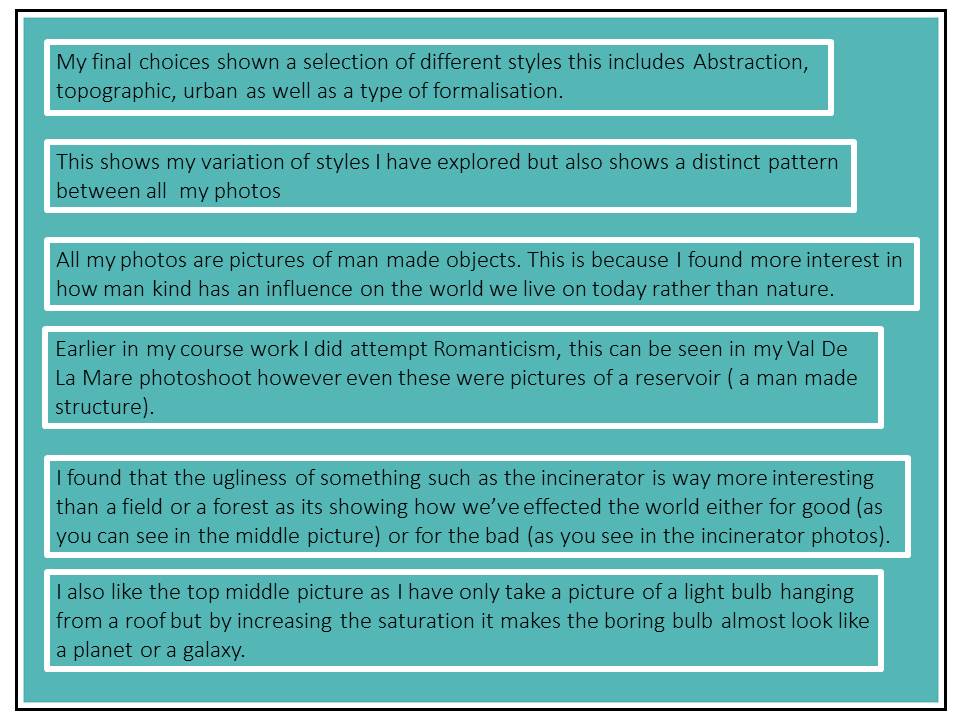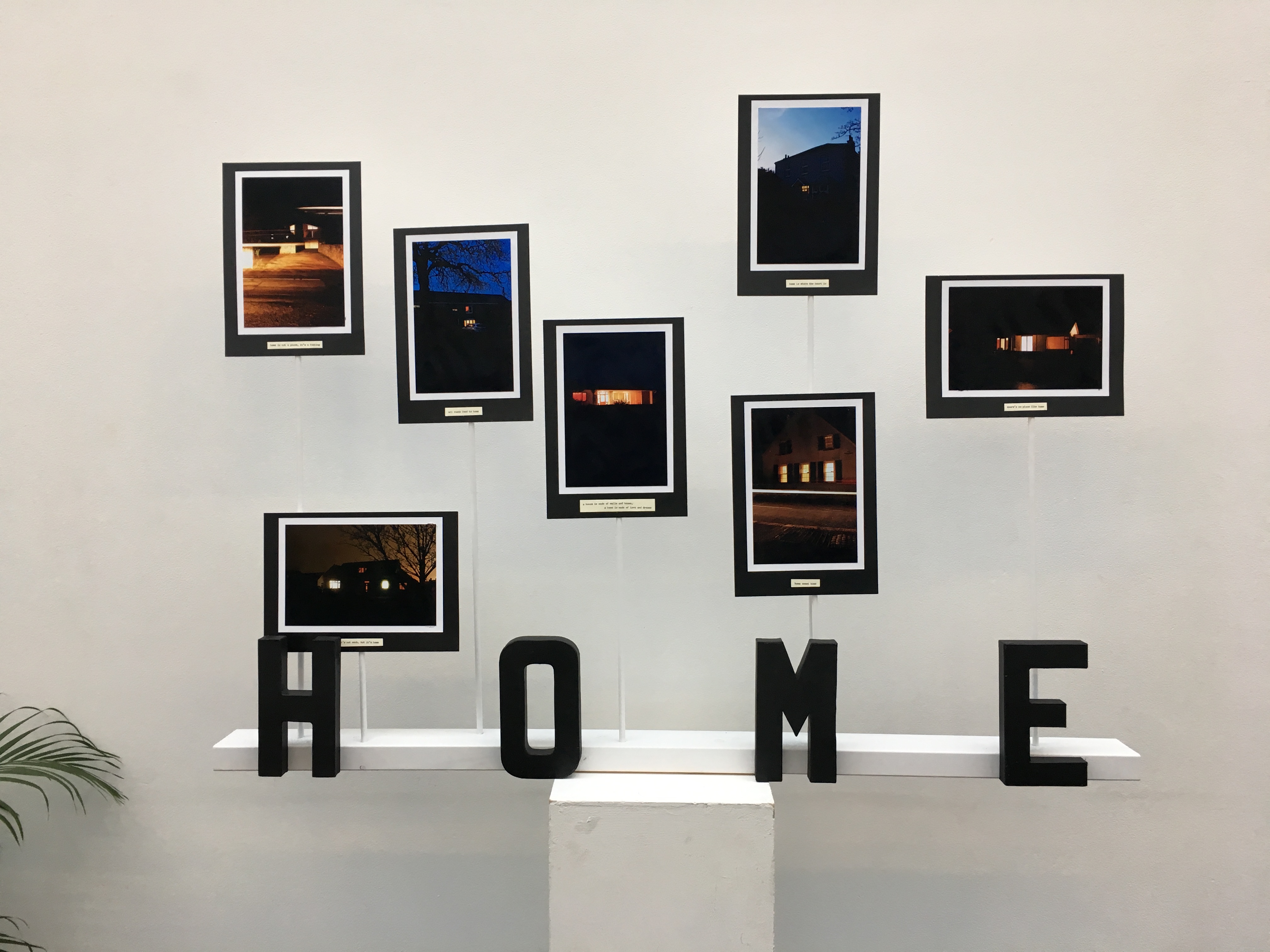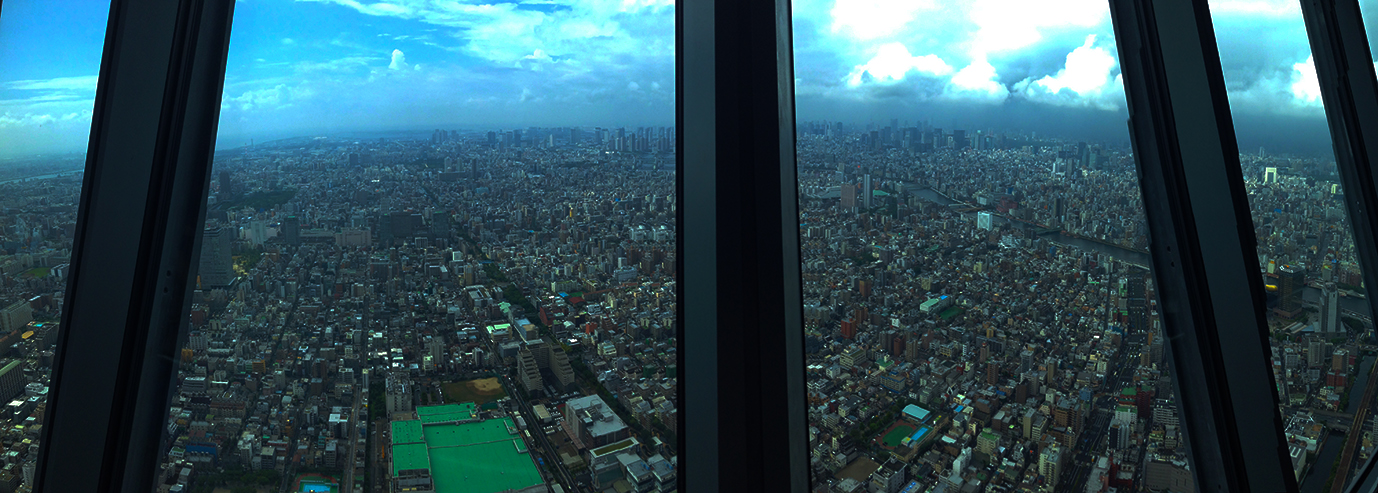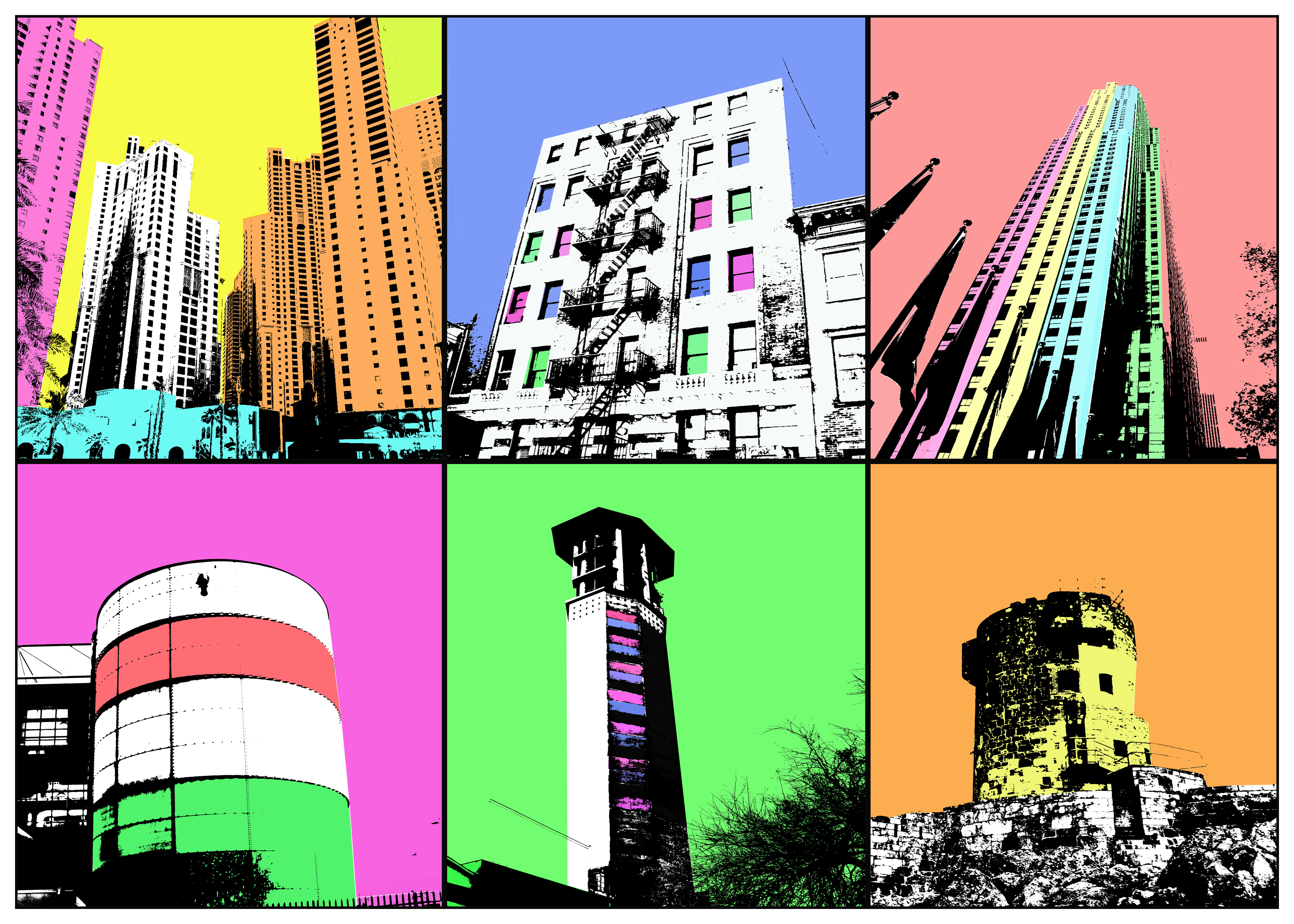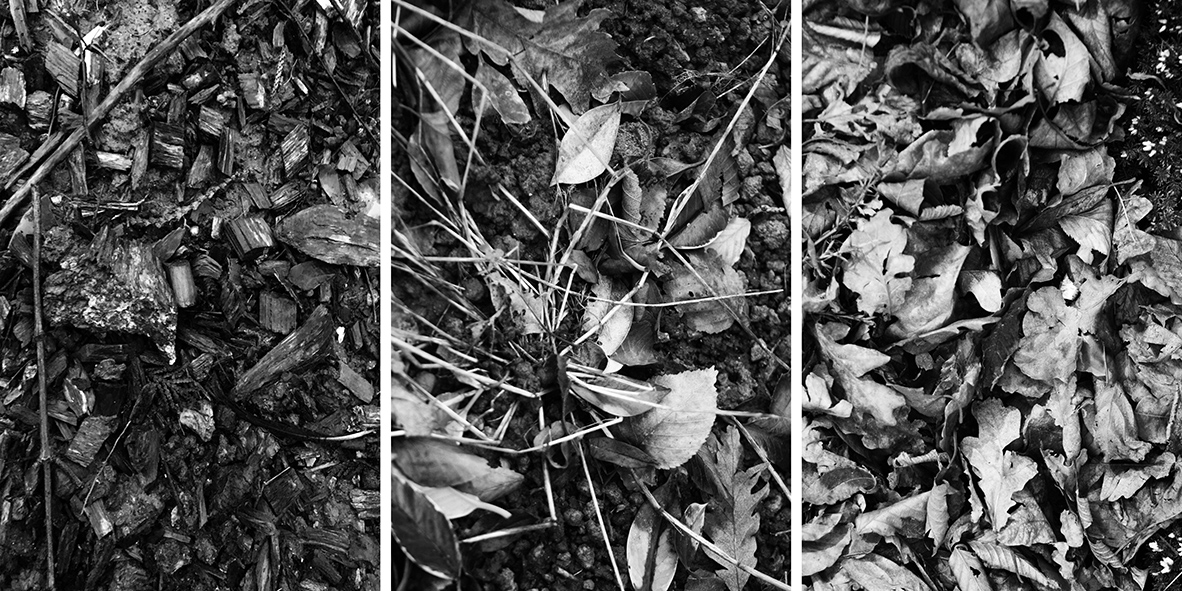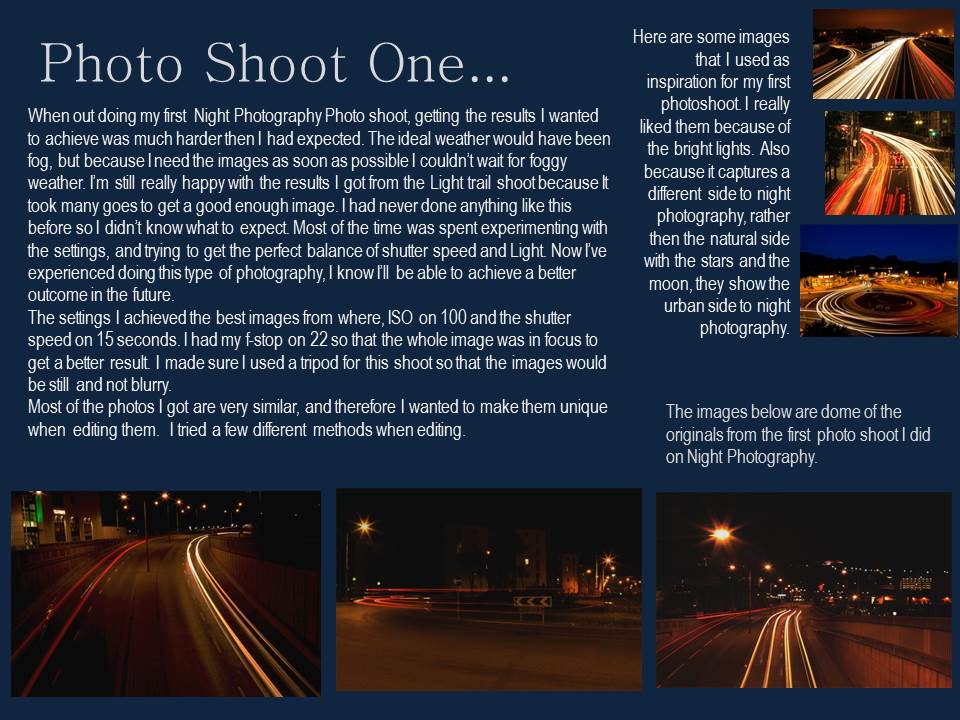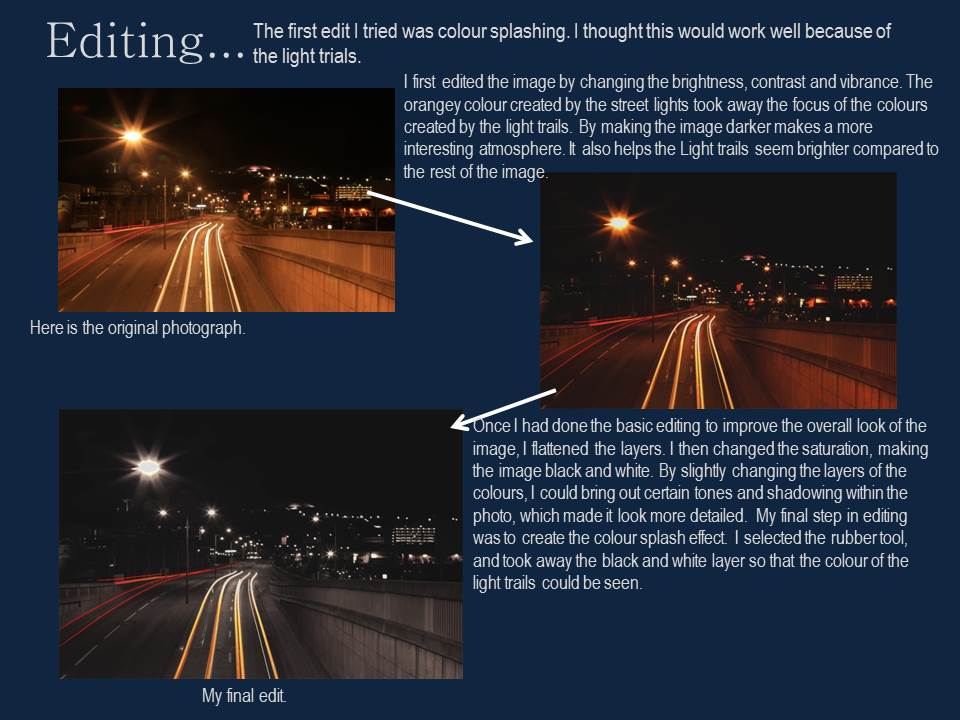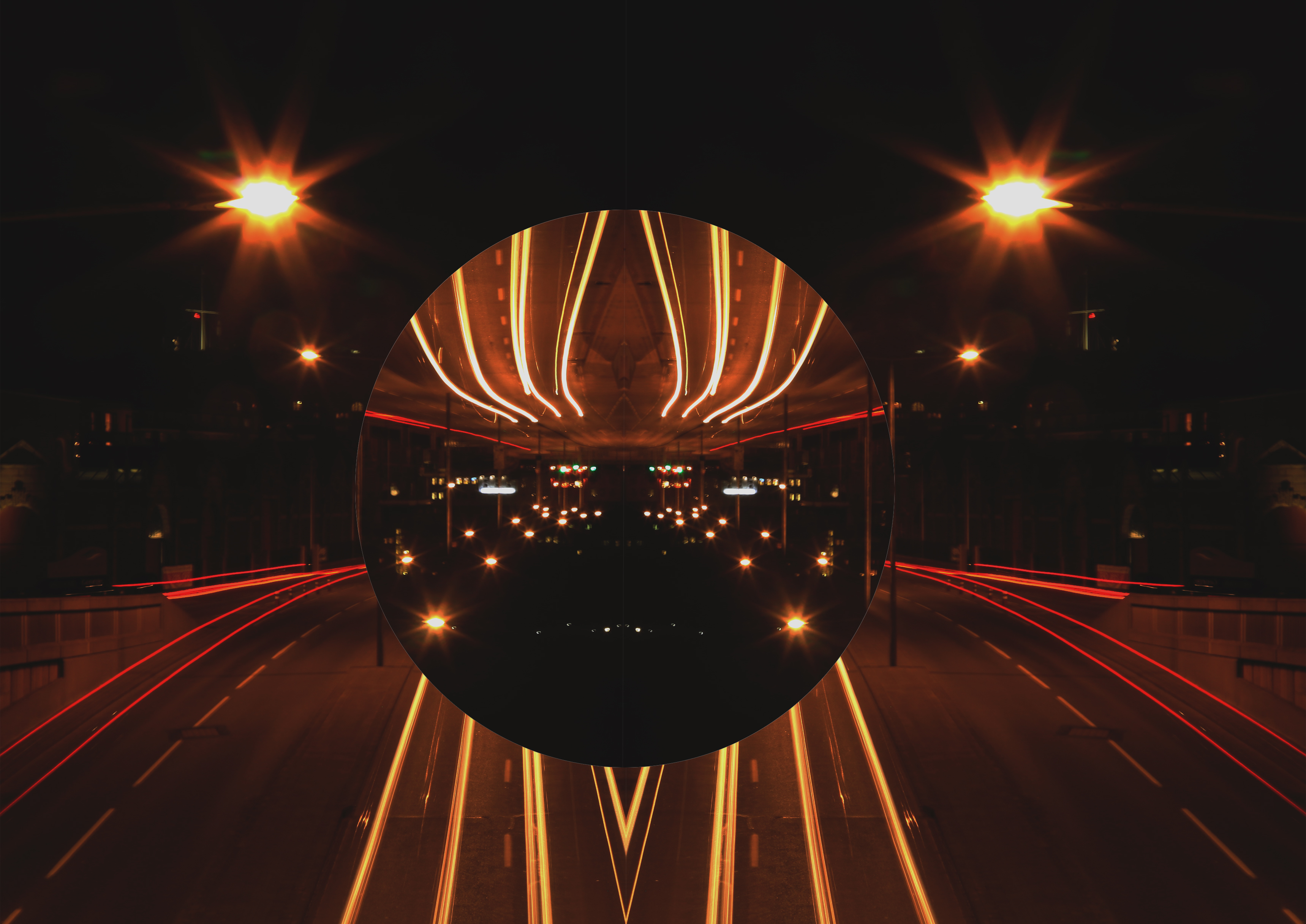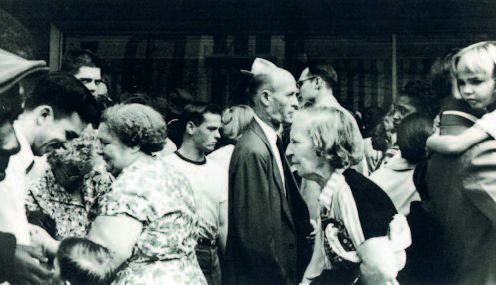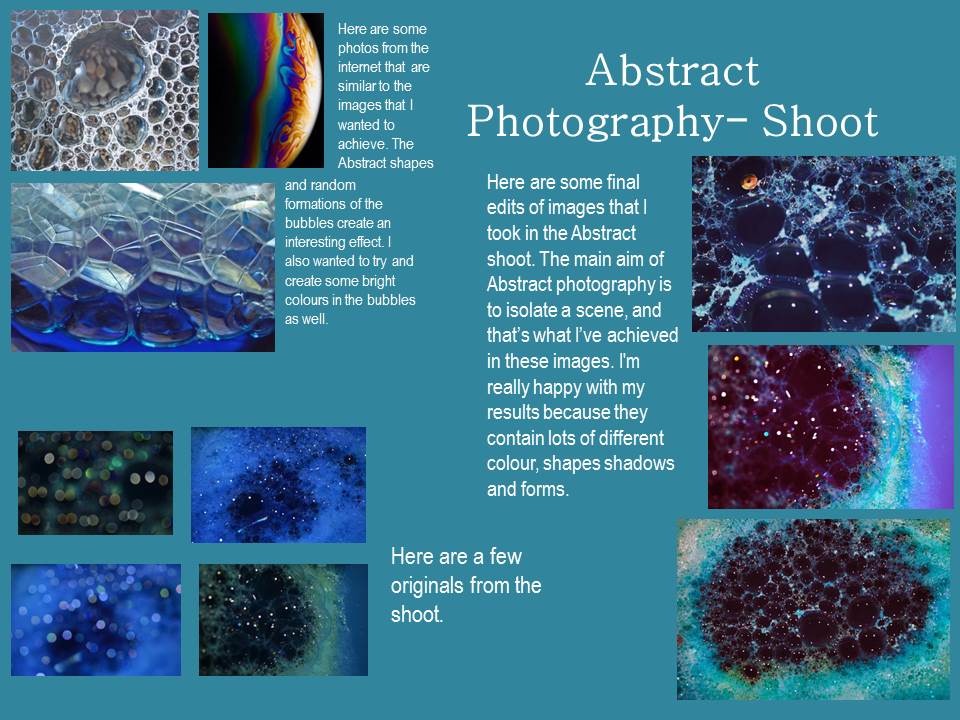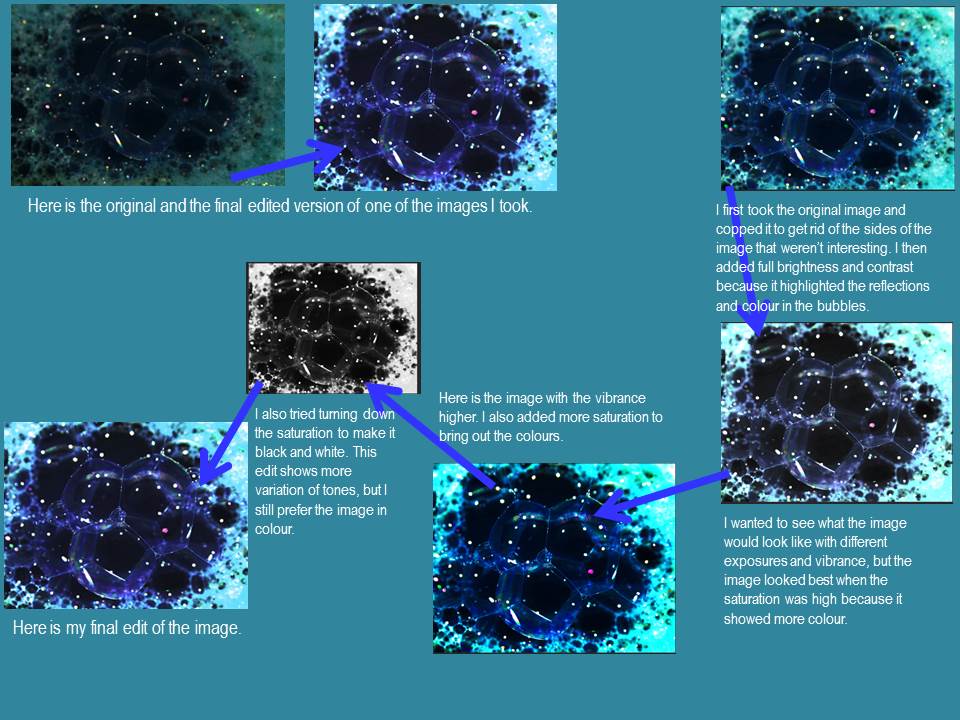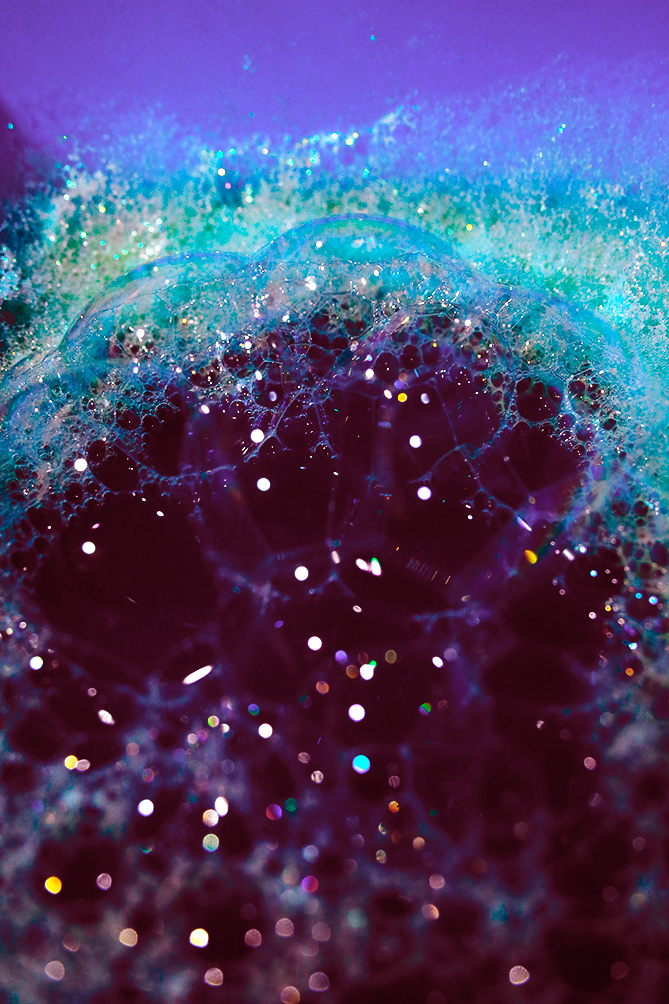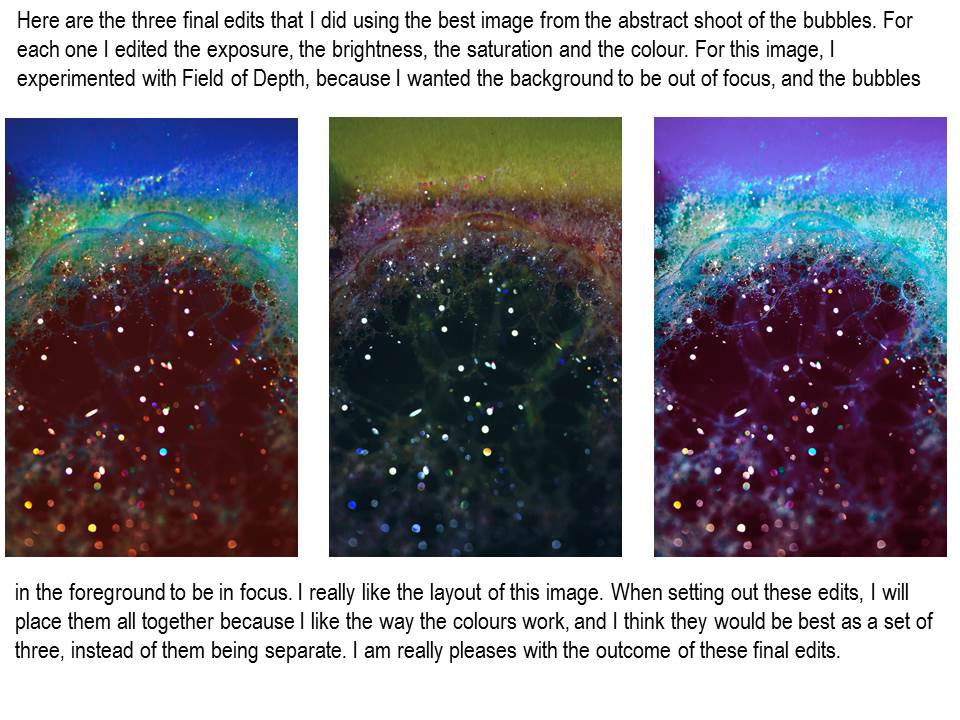Category Archives: Final Responses
Filters
Evaluation // Landscapes
Todd Hido Reference / Comparison to my Interpretation // Landscapes
Panoramic Shots
My Final Piece // Landscapes
This is my final outcome for the ‘Landscapes’ unit:
I stuck fully to my plan however, did not use a decorative item – being the tape as I felt it made each mount look too overcrowded but overall, I am very happy with how it has turned out and I beleive it represents the topic well. I feel like it showcases my work to the best of its ability and represents my creativirty. The way I wish to show my skills and techniques I’ve learnt throughout the process are mixed wihtin this physical struture as well as on the blog. It shows that I can work well both digitally, on Photoshop to produce well-thought out work and edits and as well, my final piece shows I can work well with physical tools; I have crated a sculpture out of simple and minimalistic ideas. My ideas are easily transferrable to an existing product.
Final Images for Landscape
These images were all inspired by Typologies. Typology is the study of types, and a photographic typology is a suite of images or related forms, shot in a consistent, repetitive manner. This series of images I have created show the different and wide range of typologies I am surrounded by.
The angle of the 6 images are the same/similar. They are all taken from a high angle to show the whole leaf, showing the details within the leaf. There are shadows and highlights on the leafs where the light has been weak or intense, creating the contrasts within the individual photographs. This therefore creates a contrast between the light background and the darker images of the leaves. The positions of the leaves are all different but still look fairly similar, 2 of the leafs are directly upright, 2 are slightly tilted to the left and the other 2 are slightly tilted to the right. The leaves are exposed very gently, drawing out certain features of the leaf such as the midrib and the veins in the leaf. The light was directly above me as the photographer and the leaves, although the light is intense in parts of the photo, the light also almost seems soft and gentle on the leaves. The focal point with each individual image is the leaf, however there is no distance or depth added to the image.
I put the images in a group of 6 as i felt that they were similar images and worked well together and was inspired by Karl Blossfelt. For my final piece i created a black border as the image is very formal and felt it suited the theme of the image.
I chose these images because they contrast with the grid of 6 leaves photos as they are natural and honest. However, the images of the man-made structures are informal and more creative so this contrasts with the image of the leaves. All of the images in this group of 6 are similar in a way but also have differences within them such as: the height, the shape and the colours.
This image is similar to the first one i presented as the angles are all from a high angle, they are all images of the ground. The images are of bark, leaves, small plants and sticks. These images don’t have a particular focal point as they are pattern type photos. This image shows nature in its purest and honest form.
Night Photography-Shoot 1
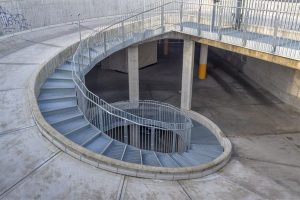
AS Photography Exam Title Guidance : “Structure”
AS Photog Exam: w/c Monday 24th April
- Groups C & D: Monday 24th & Thursday 27th April
- (Wednesday NO EXAM)
- Groups A & E: Tuesday 25th & Friday 28th April
Read this carefully and think how you can design a thorough unit of investigation that explores your chosen theme, topic or subject matter…
-
1.the arrangement of and relations between the parts or elements of something complex.“the two sentences have equivalent structures”
synonyms: construction, form, formation, shape, composition, fabric, anatomy, make-up, constitution; More
-
1.construct or arrange according to a plan; give a pattern or organization to.“services must be structured so as to avoid pitfalls”
<<<CHOOSE 1 STARTING POINT ONLY>>>
Use mindmaps and moodboards to start…
You should aim to complete at least 1 Photo-shoot per week
Structure
- Erin O’Keefe often photographs objects propped up in a corner. Her work explores the visual ambiguities of shadow, space, shape, colour and reflection. Originally an architect, her photographs are of real structures without using digital manipulation such as Photoshop. Many other photographers have experimented with constructed spaces and reflections, such as Florence Henri, Robert Smithson, Owen Kydd, David Haxton, Thomas Demand, Paul Strand etc
Florence Henri
Composition Nature Morte, 1929
photograph
2. Robert Frank shocked his adopted country when he published his groundbreaking book The Americans in 1957. Rather than seeing the cosy Middle America personified in later TV cartoons like The Flintstones, he revealed the raw push and shove of a society that was at odds with itself. Other photographers such as Nan Goldin, Jeff Wall, Chris Killip and Sophie Calle have also been compelled to expose the real structures in society and ‘Tell it like it is’.
Robert Frank
Canal Street – New Orleans, 1955
photograph
3. Stories can be told in a single frame, three frames, or, as in films, millions of frames. Narrative structures can be linear, such as with Duane Michals’ sequences, or non-linear such as Paul Graham’s A Shimmer of Possibility and Wolfgang Tillmans’ If One Thing Matters, Everything Matters. Photographers, filmmakers and animators find unique ways to structure the narratives in their work.
Duane Michals
Alice’s Mirror
photograph
Bill Owens
Untitled from ‘Suburbia’
photograph
4. Photographers have been fascinated by the structure of natural forms from the earliest days of the medium. Karl Blossfeldt found a monumental presence in simple seedheads. Edward Weston revealed beauty in the forms of peppers and shells. Robert
Mapplethorpe, Ori Gersht, Todd McClelland and Olivia Parker have also focused on natural forms in different ways, demonstrating personal responses to light and texture.
RM
Honesty
photograph
Here are some other suggestions that may stimulate your imagination / Starting points for photo-assignments
• Pine cones, pineapples, grapevines, hops, ivy, bindweed
• Scrapyards, building sites, cranes, restoration yards, derelict ruins
• Crystals, molecules, geology, fossils, footprints, tracks
• Stadiums, orchestras, rock concerts, floodlights, staircases
• Motorways, railways, runways, dockyards
• Flowers, plants, trees, fungi, algae, feathers, scales, shells
• Nests of weaver birds, wasps and bees, termite mounds, baskets
• Circuit boards, pipework, telephone poles, towers, pylons, skyscrapers
• Shop displays, escalators, bars, libraries, theatres and cinemas
• Gardens, parks, playgrounds, swimming pools, beaches
• Dolls, mannequins, puppets, cuddly toys, Lego
Assessment Objectives
You should provide evidence that fulfils the four Assessment Objectives:
AO1 Develop ideas through sustained and focused investigations informed by contextual and other sources, demonstrating analytical and critical understanding
AO2 Explore and select appropriate resources, media, materials, techniques and processes, reviewing and refining ideas as work develops
AO3 Record ideas, observations and insights relevant to intentions, reflecting critically on work and progress
AO4 Present a personal and meaningful response that realises intentions and, where appropriate, makes connections between visual and other elements.
Your preparatory studies should show evidence of:
• your development and control of visual literacy and the formal elements (tone,
texture, colour, line, form and structure)
• an exploration of techniques and media
• investigations showing engagement with appropriate primary and
secondary sources
• the development of your thoughts, decisions and ideas based on the theme
• critical review and reflection
Good luck and make sure you ask for guidance at any stage of the process…remember to play to your strengths and approach this unit in a similar way to your coursework units !!!


